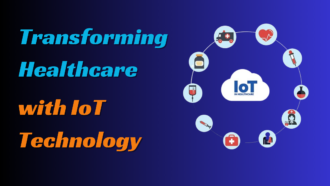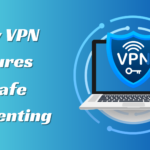Best 8 Network Monitoring Tools [Free Versions] – NOC
- 1 What are the best practices for a NOC?
- 1.1 Concentrate on training and knowledge improvement:
- 1.2 Assign clear jobs:
- 1.3 Enable a solid communication system:
- 1.4 Build clear principles and protocols:
- 1.4.1 Incident management:
- 1.4.2 Solutions:
- 1.4.3 Escalation:
- 1.4.4 Prioritization:
- 1.5 A hybrid cloud is the foundation for dynamic delivery
- 2 Best Free and Open Source Monitoring Tools for Your Networks:
- 2.1 AppNeta PathTest
- 2.2 Cacti
- 2.3 EventSentry Light
- 2.4 Famatech Advanced IP Scanner
- 2.5 Icinga
- 2.6 LibreNMS
- 2.7 LogRhythm NetMon Freemium
- 2.8 Nagios Core
What are the best practices for a NOC?
Best practices for a network operations centre include preparing training, relying on clearly portrayed roles, and setting up clear protocols for communication.
Concentrate on training and knowledge improvement:
Your NOC team must have high-level expertise in monitoring, managing, and resolving issues specific to network performance and your IT infrastructure. Give powerful and persistent training on procedures and protocols for any event, and keep up-to-date on changing tech scenarios and changes to your IT environment. Organizing network performance issues, yet don’t neglect procedures for cooperating with your SOC on security issues. An escalation is a critical procedural issue; guarantee your staff knows how and when to raise a growing problem to a more experienced associate quickly.
Assign clear jobs:
Flatter organizational systems are becoming more popular these days. In the fast-paced, must-act-now world of network monitoring, it looks good to empower every associate instead of firmly requesting position or role-based handoffs. While technicians need to be outfitted with the data and capacity to act quickly to resolve network failures, you still need escalation levels and shift supervisors to administer the NOC.
NOC technicians are responsible for completing their assigned tasks and sharing knowledge. And by choice, they need to be micromanaged. You still require a leader who assigns work to techs based on their skills, describes tasks, access reports, resolves all the reported incidents promptly, and represents the more extended organization of events as required.
Also, every technician should know specifically what projects will be assigned to them, their level, and the reporting line should they have to escalate an incident or respond to one.
Enable a solid communication system:
Keeping the lines of communication open within the NOC, SOC, and other external teams can be troublesome. It’s unquestionably something beyond setting up a few occasional meetings. Sometimes, it takes a solid effort to plan staff, share information and consider them responsible contacts. Creating regular opportunities for cooperation and coordination is imperative to a solid NOC.
Build clear principles and protocols:
Keep things running smoothly by making evident policies for the following:
Incident management:
Document steps the technician should follow to manage incidents like – When the technician can make a decision, when to escalate the decision, when to suggest associates, and so on
Solutions:
Outline procedures for managing ordinary issues and give fast strategies for managing emergencies.
Escalation:
Escalation procedures for encountered issues and to whom.
Prioritization:
Establish which incidents are most important and which technician level should manage them. Incidents should be allotted based on the degree to which they will impact the business.
Well-established protocols ensure everyone is on the same page, give consistency to the organization, and extend responsibility among NOC staff. The right people and processes set up a more reliant foundation.
A hybrid cloud is the foundation for dynamic delivery
A powerful platform, such as a hybrid cloud, is an engaging operator for the dynamic delivery model. Hybrid cloud is compliance with tools and technologies to streamline:
- Virtual collaborations
- Digital project management
- Automation
- Knowledge management processes.
A hybrid cloud can help address security limits, too – it allows various applications to run and data to be stored in line with security, regulatory, and administration conditions. Enterprises can take action on their cloud transition dynamically using Hybrid cloud tools. Some pre-settings can accept minimum downtime levels. Tools will help to avoid silos and handle legacy systems.
The Hybrid cloud also allows public and private clouds and on-premises IT to interoperate continuously using standard technology interfaces, such as Kubernetes, Linux, and the Open Container Initiative.
These technology interfaces help companies progress with agility and scale while improving responsiveness and reducing costs regardless of growing complexities.
Best Free and Open Source Monitoring Tools for Your Networks:
Picking the proper network monitoring solution for your enterprise isn’t easy. IT specialists and bosses must consider some factors while picking solutions for their business, such as security, compatibility, simple-to-use, and (clearly) budget plan. Enterprise-grade tech solutions are typically expensive, but is that always the case? Not so much! Your business needs to consider a couple of free and open-source network monitoring tools while picking a network monitoring solution.
That is why we have listed the top free and open-source network monitoring tools. These tools can be installed and used or delivered under an open-source license. They should be considered if your enterprise needs to limit costs, but they may not be the best fit for your company.
Some trimmed-down versions are available in the sets of free network monitoring programs equipped with a network monitor. And many of the open-source developments require technical knowledge or developer expertise.
In this manner, we’ve listed a segment of each free and open-source tool’s noteworthy feature so you know what each solution is skilled at.
AppNeta PathTest
PathTest is a free capacity testing tool that will give you the most exact results possible. It gives you a perception of your network’s actual maximum capacity, is a testing tool for layer three and layer four execution, and extends accurate testing beyond some other tools available today.
Cacti
Cacti is an ideal solution for a complete network diagramming solution. It harnesses the power of RRDTool’s data storage and charting representation. Fast poller, advanced outline templating, different data acquisition steps, and client management are some of the highlights of this Cacti. All of this is encompassed by an intuitive, easy-to-use interface that looks good for LAN-size installations to complex networks with a large number of tools.
EventSentry Light
EventSentry Light is the freeware version of EventSentry and the successor to EventwatchNT. It allows you to review EventSentry for an unlimited time. The Light version still features the full version’s comparable event log monitoring capabilities, so your enterprise can accumulate and decipher data from sign-ins on devices related to your network. This tool can also monitor system health, service, performance issues, and hardware failures.
Famatech Advanced IP Scanner
Famatech’s Advanced IP Scanner is a free network monitoring tool that analyzes LAN networks and devices. It allows you to scan for devices on your network and remotely control connected computers and nodes. If you realize that a device isn’t being utilized and is consuming significant resources, you can switch it off from the tools. The tool partners with Famatech’s Radmin solution for remote IT management so that you can manage IPs from anywhere.
Icinga
Icinga is an open-source network monitoring tool that best assesses network availability and performance. Your enterprise can watch hosts and applications over your entire network infrastructure through a web interface. The locally scalable tool can be configured to work with such a device. There is also a modest pack of Icinga modules for specific monitoring capabilities, such as ring VMWare’s vSphere cloud environment and business process modelling.
LibreNMS
LibreNMS is an open-source network monitoring system that uses several network protocols to observe every device on your network. The LibreNMS API can retrieve, manage, and graph the data it assembles and supports level-wise scaling to grow its monitoring capacities near your network. The tool incorporates a versatile alerting system that is altered to communicate with you through the best method for your company. Moreover, it offers native iOS and Android applications.
LogRhythm NetMon Freemium
LogRhythm NetMon Freemium is a free version of LogRhythm NetMon with enterprise-grade packet capturing and analysis capabilities similar to the full version. For this version, there are limits on packet storage and data processing. The freemium still allows customers to perform network threat location and response capabilities based on data packet analysis. It also gives a comparative network threat alerting system as the full version, allowing you to keep up-to-date on your network’s performance and security.
Nagios Core
Nagios Core is a free network monitoring tool expected to be the basis for other monitoring and alerting software offered by Nagios. It is primarily a performance check tool that plans and executes checks for network performance over the entire infrastructure. As the event processor for performance checks used by various Nagios software, Nagios Core is also prepared to expand its abilities with independent add-ons via the Nagios Exchange.
We are looking for a solution to improve your network performance. Our Network Operations Center Design contains the Best NOC Practices for the top network performance monitor vendors and questions you need to ask vendors and yourself before buying.

![Best 8 Network Monitoring Tools [Free Versions] – NOC Best 8 Network Monitoring Tools [Free Versions] – NOC](https://techbehindit.com/wp-content/uploads/2020/09/worker-monitoring-network-operations.jpg)















